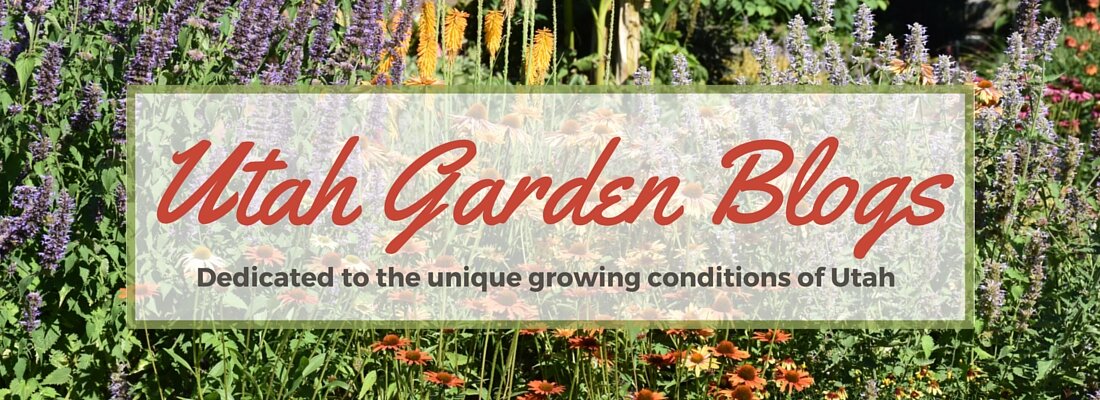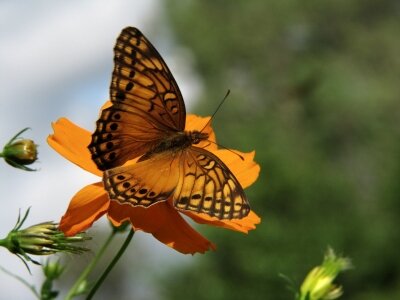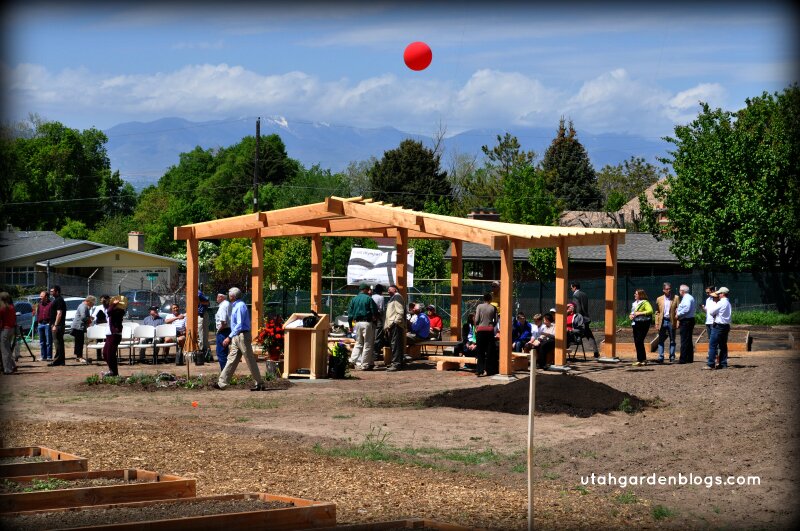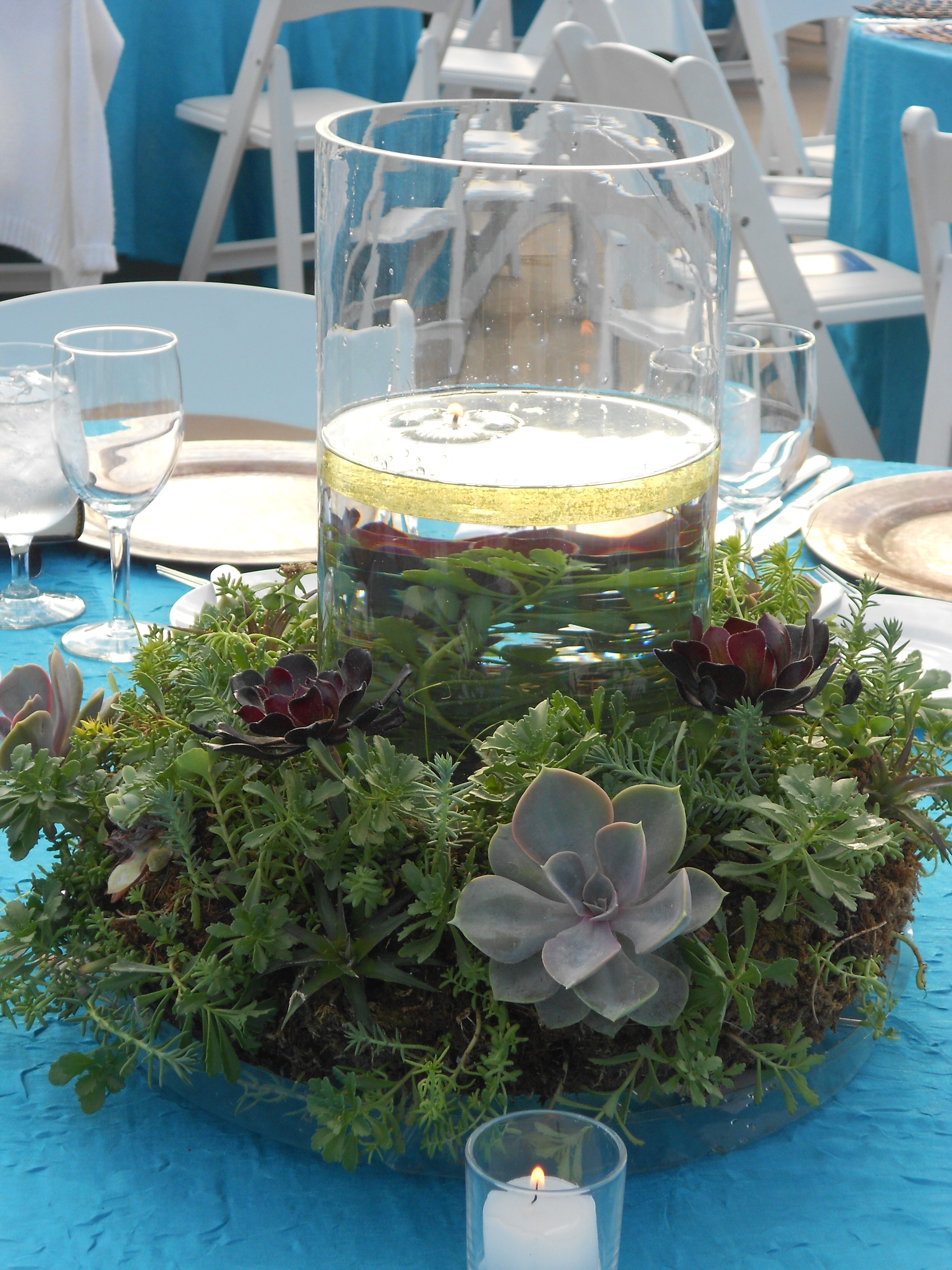 Pollinators (or winged visitors) are essential to successful gardening. They are a necessity for the survival of plants and bounteous crops. I was thus honored to attend David Salman’s lecture on inviting birds, bees and butterflies in our gardens through beautiful plantings of perennials, ornamental grasses. I also got to pick his brain over lunch with fellow gardening experts from the Conservation Garden Park who sponsored David. David is Founder, CEO and Owner of Santa Fe Greenhouses, and he is the Chief Horticulturalist of High Country Gardens. David is an expert on waterwise (xeric) plants for western landscapes and blogs about it at The Xeric Center. He is also the recipient of the distinguished “American Horticultural Society 2008 Great American Gardeners Award”. To David’s credit, he has written two in-house publications “Waterwise Garden Care” and “Spectacular Seasons of Color“, plus a myriad of videos found on YouTube. So you can see why I was excited to not only meet him, but to glean some knowledge from his expertise. I always like to ask gardening experts how they got interested in gardening and horticulture and so I posed the same question to David. He said when he was young, he used to collect caterpillars and try to figure out what they liked to eat and what plants they liked to visit. He’d raise them until they became butterflies or moths. It reminded me of my daughter who felt sorry for worms stuck on the pavement after a heavy rain. She brought them home, put them in dirt and kept them alive for months by watering the soil. After a couple of them died, she put them back in the garden soil. During David’s lecture, he stressed having a healthy gardening environment for the pollinators. Having pollinators (birds, bees, and butterflies) in your garden is indicative of a healthy environment. They help reproduce plants and set the fruits. Our planet is run by plants and so by inviting these special winged visitors into our gardens, we are doing our part in building a healthy environment. Here are some suggestions David gave in his lecture to invite winged pollinators to our gardens: Provide Food, Water and Shelter
Pollinators (or winged visitors) are essential to successful gardening. They are a necessity for the survival of plants and bounteous crops. I was thus honored to attend David Salman’s lecture on inviting birds, bees and butterflies in our gardens through beautiful plantings of perennials, ornamental grasses. I also got to pick his brain over lunch with fellow gardening experts from the Conservation Garden Park who sponsored David. David is Founder, CEO and Owner of Santa Fe Greenhouses, and he is the Chief Horticulturalist of High Country Gardens. David is an expert on waterwise (xeric) plants for western landscapes and blogs about it at The Xeric Center. He is also the recipient of the distinguished “American Horticultural Society 2008 Great American Gardeners Award”. To David’s credit, he has written two in-house publications “Waterwise Garden Care” and “Spectacular Seasons of Color“, plus a myriad of videos found on YouTube. So you can see why I was excited to not only meet him, but to glean some knowledge from his expertise. I always like to ask gardening experts how they got interested in gardening and horticulture and so I posed the same question to David. He said when he was young, he used to collect caterpillars and try to figure out what they liked to eat and what plants they liked to visit. He’d raise them until they became butterflies or moths. It reminded me of my daughter who felt sorry for worms stuck on the pavement after a heavy rain. She brought them home, put them in dirt and kept them alive for months by watering the soil. After a couple of them died, she put them back in the garden soil. During David’s lecture, he stressed having a healthy gardening environment for the pollinators. Having pollinators (birds, bees, and butterflies) in your garden is indicative of a healthy environment. They help reproduce plants and set the fruits. Our planet is run by plants and so by inviting these special winged visitors into our gardens, we are doing our part in building a healthy environment. Here are some suggestions David gave in his lecture to invite winged pollinators to our gardens: Provide Food, Water and Shelter

Photo by Christian Meyn
We can make our garden an inviting place for winged visitors by providing food, water and shelter; these are basic elements in bringing pollinators into the garden. Hummingbirds need moving water from a fountain or dripping source. They won’t go to still water. (I didn’t know this.) Song birds also need clean water–moving or still. He suggested making a low spot in the soil that collects water as butterflies are attracted to mud puddles. Garden Organically By gardening organically, we invite winged visitors to our garden. We can do this by preparing our soil and maintaining the soil fertility with natural and organic compost and fertilizers. He said “We wouldn’t throw salt in our gardens–we know that isn’t healthy–and yet we cover our gardens and feed our plants with chemicals that make our gardens and our environments sick. Using such chemicals keep the pollinators away that keep our gardens healthy.” Pesticides are toxic to pollinating insects and animals. There are definite options that are environmentally friendly and organic to keep our gardens fruitful and healthy. A couple of organic pesticides that are environmentally friendly:
- Neem Oil has been used in India and other southeast countries in agriculture, food storage, and in curing many diseases. Research has proven that Neem has insecticidal, fungicidal, miticidal, and medicinal properties with no added solvents.
- Pyrethrin Insecticide, which is derived from the African daisy. It has been used to control pests for over a century and is considered one of the least toxic insecticides to mammals. It is biodegradable and breaks down with exposure to light.
These need to be carefully applied in the morning before beneficial insects are active. Provide Nesting Sites Everybody needs a home and another way to invite winged visitors is providing nesting sites. By leaving unmulched, bare soil you invite burrowing solitary bees and bumble bees. David suggested leaving herbaceous plants standing and not cutting back the garden before winter so beneficial insects, butterflies and moth pupae have a place to over winter. He also suggested providing nesting tubes for solitary bees (like Mason bees). Plant a Diversity of Plants

Photo by Darren Robertson. All Rights Reserved
By planting a lot of different flowering plants and grasses in your garden, you’ll provide nectar for pollinators and food for insect larvae (like caterpillars and seeds for songbirds). He suggested planting more than one of each perennial and ornamental grasses and planting them in multiples to give a better visual impact and to make it much more efficient for pollinators to stay in the yard. (This is one area that I fail. I do plant annuals in multiples, but my perennials are mono-planted throughout the garden.) David went on to list many bulbs, grasses, and blooming perennials that are waterwise and which attract pollinators. Most of these are listed in their catalog at High Country Gardens. Invite pollinators into your garden and enjoy the fruits of their labors with healthy plants and a bounteous crop!
Jeni is a native of Lincoln, Nebraska and has lived and gardened in Utah for the past 22 years. She is the owner and author of Garden Stems, an online gardening resource, and on the Advisory Council for a local botanical garden. She was featured in 2009 on Women on the Web (wowOwow.com).





Cynthia
July 8, 2011 at 9:50 amThanks for taking notes! I learned a lot from David and have a whole new appreciation for those annoying Ground Bees in one of my flower beds. I guess I’ll skip the mulch there and just let the Bees thrive.